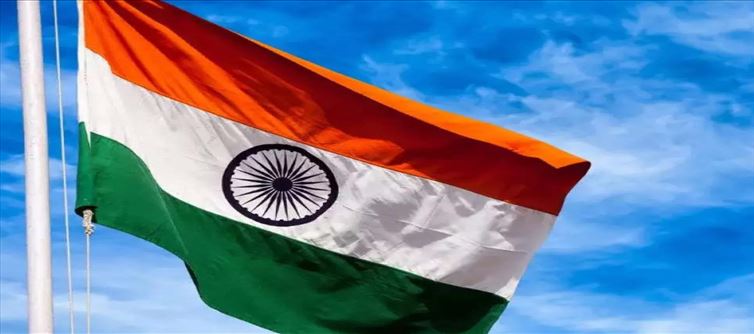
When mahatma gandhi said, "Every nation should have a right flag," he emphasized why india should have a flag. He said: It is right for us Indians, Muslims, Christians, Jews, Persians and all those who have a home in India.
A flag is not only a symbol of a nation and its principles, but also unites people of different cultures, religions and backgrounds. It represents the tricolor in india as it has grown since its inception.
The first flag of India
The national flag was adopted for the first time in a general election held on 22 July 1947. This was a few days before india declared independence from Britain.
It is reported that Sister Nivedita, an Irish disciple of Swami Vivekananda, made the flight between 1904 and 1906.
The flag is red and yellow with the shape of "Vajra" (weapon of god Indra). Vande Mataram was written in Bengali. The colors red and yellow stood for freedom and victory, while the vajra symbol stood for power. On 7 august 1906, the national flag was hoisted for the first time at Parsi Bagan in Calcutta, now known as the famous Girish War. The Tricolour comprised three equal stripes of green (on top), yellow (in the middle) and red at the bottom. The green panel had 8 lotus flowers, half-opened and the yellow portion had the words Vande Mataram in Devnagiri script.The Other Flags
Another National Flag was designed by Madam Bhikaji Cama, Veer Savarkar and Shyamji krishna Varma, popularly known as ‘Cama Flag’, which was showcased in a socialist conference in Berlin, Germany.
This flag was similar to the previous one but the top strip had only one lotus and seven stars denoting ‘Saptarishi’ and the colour saffron was introduced in the top panel while green occupied the bottom strip. It also had the words ‘Vande Mataram’.
This was for the first time that India’s flag was being unfurled on an international level, popularly known as the Berlin Committee Flag.During the home Rule Movement 1917, Annie Besant and Lokmanya Tilak were main figures in the national struggle. There are five red stripes and four horizontal green stripes, and the shape of Saptrishi with seven high stars above it is preserved. In the upper left corner, towards the pole, is the Union Jack. In the right corner in front of the moon, there is a white star. The final version of the flag
Today's flag was designed by pingali Venkaiah, the freedom fighter, also known as japan Venkaiah. According to reports, the idea of the tricolor came to venkaiah when he met mahatma gandhi in south africa during the Second Anglo-Boer war (1902-1899), when he was released as part of the british Army.
At the All india Congress Committee in Bezwada in 1921, venkaiah again met gandhi and proposed an original design for the flag, with two stripes of red and green representing the two main communities, the Hindus and the Muslims. However, gandhi suggested adding a white ribbon to symbolize peace with other communities living in india and a spinning wheel to symbolize the country's progress.
How to choose three colors today
In 1931, the red color of the national flag was replaced by saffron and placed on the top, while the white and green stripes remained on the middle and lower panels. Gandhiji's revolution symbol is in the center of the flag.
Saffron represents strength, white represents truth, and the bottom represents fertility. A resolution was passed in the Conference Committee to make this the official flag of India. It is also the battle symbol of the indian National Army.
Finally, on 22 July 1947 the members of the Constituent assembly met in the delhi Legislative assembly, where the first item on the agenda was Pandit Jawaharlal Nehru's request to adopt a national flag for india free.
The national flag is supposed to have three horizontal colors of deep blue, white and dark green in equal proportions. The white bowl has a dark blue charkha (charkha replaced by chakra) that appears on the abacus of Ashoka's lion Sarnath ornament. But mahatma gandhi did not like the flag, and in one of his letters published in the mahatma gandhi Collection, he said that he did not like the design for two reasons, the lack of Union Jack, and successor of Ashoka. Chakra.




 click and follow Indiaherald WhatsApp channel
click and follow Indiaherald WhatsApp channel